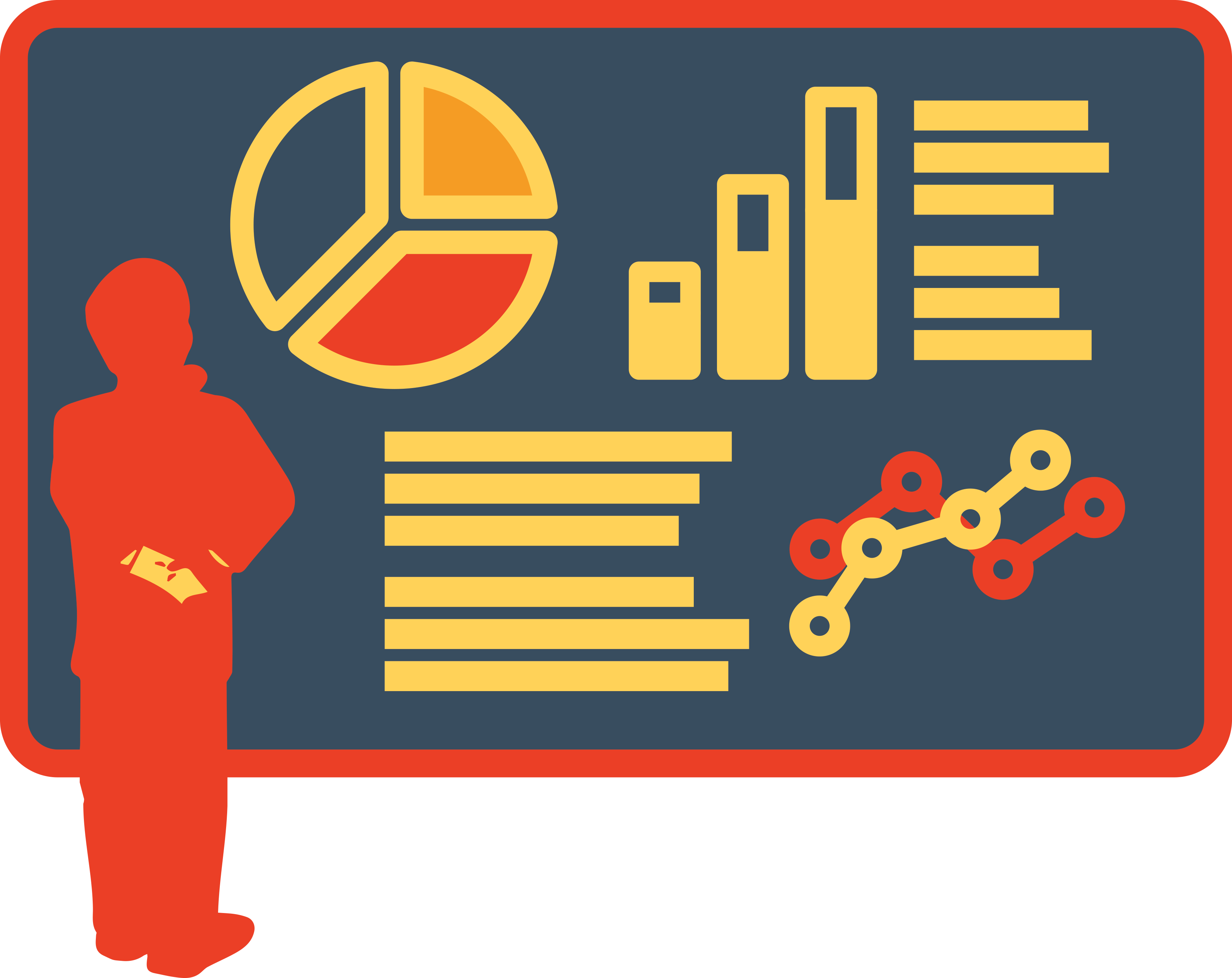What is data-driven attribution?
Prior to September 27, 2021 Google ads provided only last-click attribution when reporting conversions. This meant ad campaigns were only credited with a conversion if it was the last ad a user interacted with.
The problem with the last-click attribution model is it’s missing most of the puzzle pieces. You won’t be able to see which ad a customer first interacted with or what happened in-between that and the sale. Because users take time to buy, usually weeks or even months, having such limited performance information makes it really difficult to optimize ads for better ROI.
Data-driven attribution is providing conversion data at multiple touchpoints across the marketing funnel, not just last-click. This is really powerful for optimizing your Google ads for ROI.
“Data-driven attribution is set to become the default attribution model for all new Google Ads conversion actions.” ~ Google
Since this initial change, Google has gone even further. As of recent updates (post-September 2023), rule-based models like First Click, Linear, Time Decay, and Position-Based are no longer supported. The only available options for new and upgraded conversion actions are Data-Driven Attribution (the default) and Last Click.
Google is famous for their incredible machine learning technology. Machine learning is how they plan to “future-proof” conversion modeling. This means integrating not just 3rd party cookie data, google account ids, and other identifying technologies into attribution, but also including modeling from advanced machine learning.
More accurate attribution from data-driven machine learning results in better advertising results for Google’s customers.
Insight Into The Entire Customer Journey
The best way to optimize your ad spend is to target high value customers. In order to find those people who will be most invested in your brand, you need to be able to track how your existing high value customers are finding you.
Attribution models give you a data-driven view of your entire customer journey. This allows you to review each step of your marketing funnel and discover what content high value customers interact with the most.
To do this, you will want to look at attribution models like these:
- First Click ROI: Attributes conversions to the very first time a user interacted with your brand’s ads.
- New Lead ROI: Lets you know what content prompted a user to opt-in to your brand’s CRM.
- ReEngaged Lead ROI: You will need this to know what content is keeping users engaged with your brand. This will save you money by optimizing retargeting and keeping you out of the spam folders.
- Last Click ROI: Which of your content actually made the sale? Last-click will tell you!
- Full Impact ROI: A quick overview of what’s working and what isn’t in your advertising.
- Linear ROI: Fractionally divides credit for each touchpoint to give you a clear overall picture of performance across your funnel.
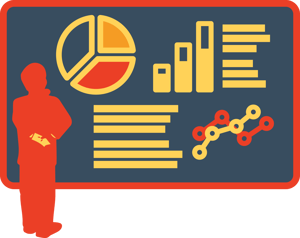 Each of these attribution models offers critical information about one or multiple steps of your marketing funnel.
Each of these attribution models offers critical information about one or multiple steps of your marketing funnel.
By incorporating this data-driven approach to advertising, your brand’s ROI will rapidly increase. This happens both through cutting wasteful spending and by having confidence in moving budget to what campaigns are working.
Google Attribution Model Limitations
Google data-driven attribution is certainly very powerful because of their machine learning. There are some limitations to the accuracy and depth of data that Google can provide.
- Attribution Window: Google’s longest attribution window for reporting is 90 days. For example, if someone buys 91 days after their first click, the ad will not get credit for the sale in first-click attribution.
- Privacy: Google still uses third-party cookie technology, which is being phased out due to privacy concerns.
- Accuracy: Google’s conversion data is limited due to their technology. This means that Ad Manager frequently over- or under- reports data.
- No Cross-Channel Capability: Google can’t see user actions on other advertising channels like Facebook or Pinterest. This makes it hard to know if Google really deserves the credit, or another channel, because Google cannot compare ads across channels.
If you are looking to compare performance across marketing channels or get more accuracy, consider using Wicked Reports in addition to Google’s built-in reporting.
Surpass Your KPIs with Data-Driven Attribution
Hitting your target metrics is much easier using data-driven attribution models.
Attribution models will help you to identify and improve your CPL, CPC, AOV, ROI and Revenue for ad campaigns at different steps of your marketing funnels. Each ad campaign will get credited for new leads and sales accurately if you are using the right marketing attribution software.
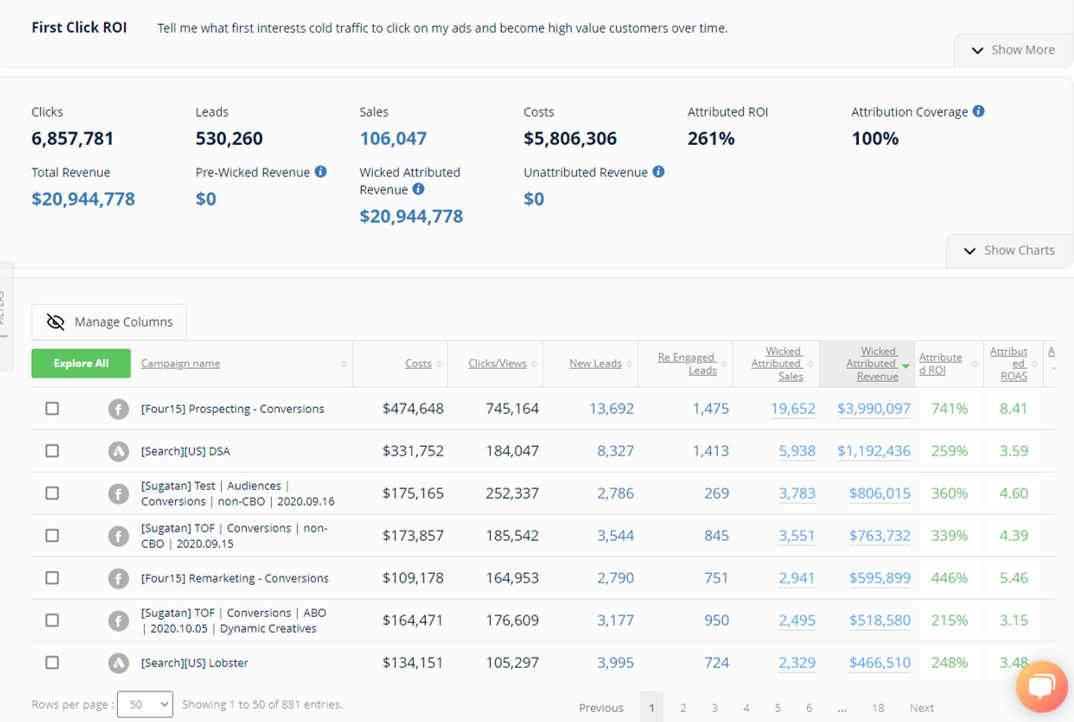
Once you’ve started acting on the data in your attribution reports, you can start taking action based on increasing customer lifetime value and not just raw conversion numbers.
The best way to do this is to look at your results over time to see if your LTV has been increasing each month.
Predict When People Will Buy
Predictive Behaviors reporting is where you’ll be able to grab insights into what day of the week, time of day, and how long it typically takes a new click or new lead to convert to a customer. This is critical information for optimizing your ad delivery and reducing your buying cycle time.
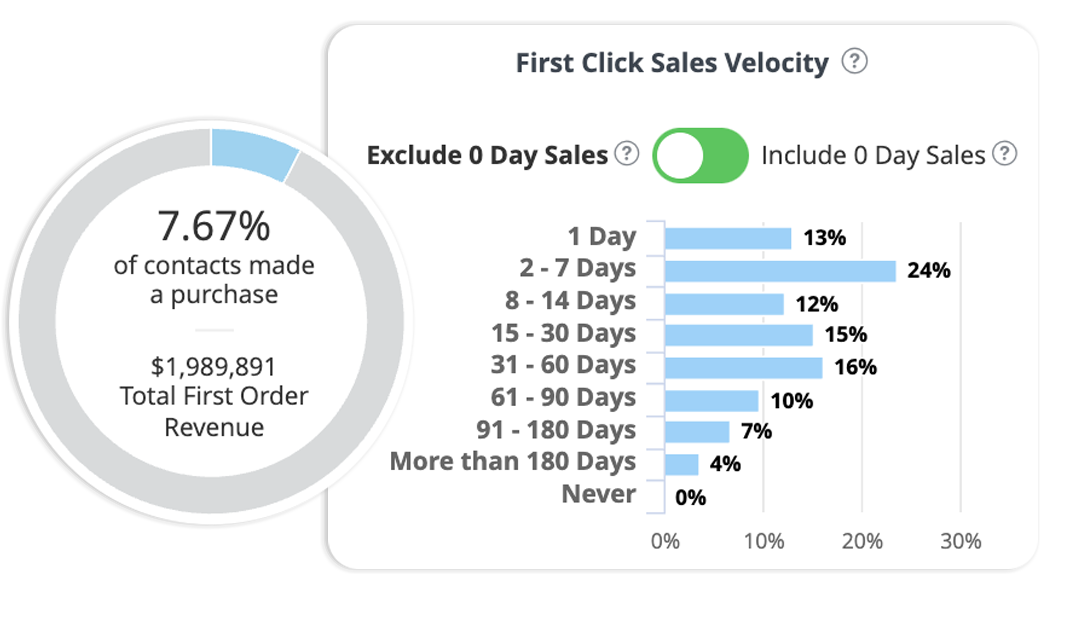
Track LTV Over Time
Finally, dive into Cohort Reports to dig deeper into LTV for new leads, new customers, or product purchases. Here is where you’re going to see when your best campaigns for long-term ROI happened, so you can replicate them and increase your LTV over time.
A Wicked Reports New Customer Cohort Report looks like this:
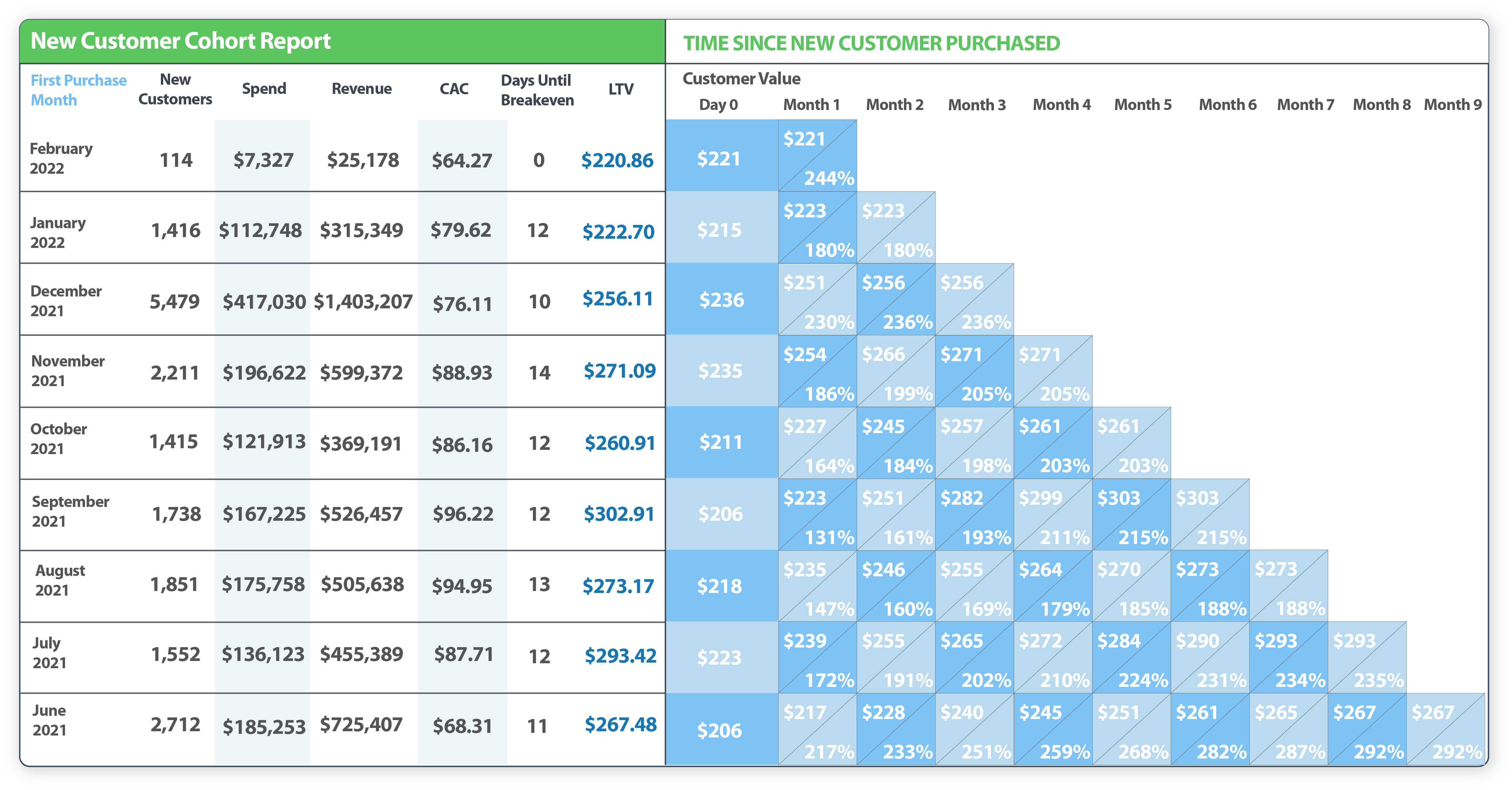
You use it by comparing customer LTV from month-to-month using that column. Or by seeing how customer value has been increasing over time.
For example, if a customer bought in July their average first order value was $223. That same “cohort” of new customers that bought initially in July increased their value to $295 on average ten months later. This is because they made repeat orders from the company, each of which increased their LTV.
You can compare this with September, where the average first order value was lower at $205. But, in just six months this cohort’s LTV had increased to $312. September’s marketing brought in higher value customers; this Wicked client should do more of whatever they did in September!
Now you can see the power of cohort reporting for improving your ROI by incrementally increasing your LTV each month.
Save Time and Money with Data-Driven Attribution Reporting
Having access to this data makes it much easier to pull reports and share them with clients or brand management. This saves a lot of time and uncertainty over manually updating spreadsheets each week or month.
Using a third-party marketing attribution software solution like Wicked Reports has some incredible benefits.
- Unlimited attribution windows.
- Cross-channel capability.
- More data reports available like Cohort Reporting and Predictive Behaviors.
- Unbiased, privacy-safe technology.
- More flexibility with reporting.
If you’re interested in Wicked Reports, book a free demo with us today.
FAQ
What is the primary difference between Last-Click and Data-Driven Attribution?
Last-Click attribution assigns 100% of the conversion credit to the very last ad a customer interacted with. Data-Driven Attribution uses Google's machine learning to assign fractional credit to multiple ad touchpoints across the entire customer journey, providing a more comprehensive view of ad performance.
Why is Google's Data-Driven Attribution (DDA) still limited for a full customer journey view?
While DDA is powerful, its limitations include a conversion lookback window (up to 90 days), reliance on Google's own ecosystem (No Cross-Channel Capability for platforms like Facebook or Pinterest), and potential data inaccuracies. Third-party tools like Wicked Reports solve these by offering unlimited attribution windows and cross-channel tracking.
How does Wicked Reports' Cohort Reporting help increase Customer Lifetime Value (LTV)?
Cohort Reporting groups customers by their acquisition month and tracks their Lifetime Value (LTV) over time. This allows you to identify which specific campaigns and months brought in the highest-value customers, enabling you to replicate those successful strategies and continually increase LTV.


